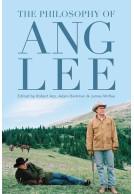How I Learned Not to Be a Photojournalist (Paperback)
Imprint: University Press of Kentucky
Pages: 160
Illustrations: photos
ISBN: 9780813108704
Published: 18th April 1996
Script Academic & Professional
Pages: 160
Illustrations: photos
ISBN: 9780813108704
Published: 18th April 1996
Script Academic & Professional
You'll be £18.00 closer to your next £10.00 credit when you purchase How I Learned Not to Be a Photojournalist. What's this?
+£4.99 UK Delivery or free UK delivery if order is over £40
(click here for international delivery rates)
Need a currency converter? Check XE.com for live rates
(click here for international delivery rates)
Need a currency converter? Check XE.com for live rates
In this engaging and personal photographic essay Dianne Hagaman presents and interprets fifty-nine photographs that will interest anyone concerned with how images convey meaning.
A photojournalist bored with the constraints of photographing for a daily newspaper, Hagaman set out to do a project that would be freer and more complete. She began by photographing alcoholics on the Seattle streets, went from there to taking pictures in the missions where her subjects seek food and shelter, then moved on to the churches whose members volunteer to work in the missions.
This in turn led her to consider the nature of religion in America more generally -- including the role of the media, hierarchy, sexism, and evangelism -- and to make photographs that embodied her increasingly complex view of these organizations and activities. As her understanding of her subjects grew more complicated, she found that she had to change the way she photographed and, more important, her conception of what constituted a "good photo." The story of this transition, and what she learned along the way, is told in both her text and her photos.
Dianne Hagaman begins this account of her personal odyssey by describing the practices of contemporary photojournalism. Then, using photographs from her project, she reveals the process by which she painfully unlearned all the professional skills that had served her as a journalist but that prevented her full visual analysis of social reality. She also analyzes her photographs to reveal the compositional and other devices through which they communicate with viewers
No other book combines such an intimate knowledge of photography with a critical view of the organizational basis for its practice. Hagaman's detailed analysis of individual pictures and their interrelationships, combined with her step-by-step account of the creation of a complex photographic essay, is unique, as is her trenchant critique of contemporary journalism.
Other titles in University Press of Kentucky...















